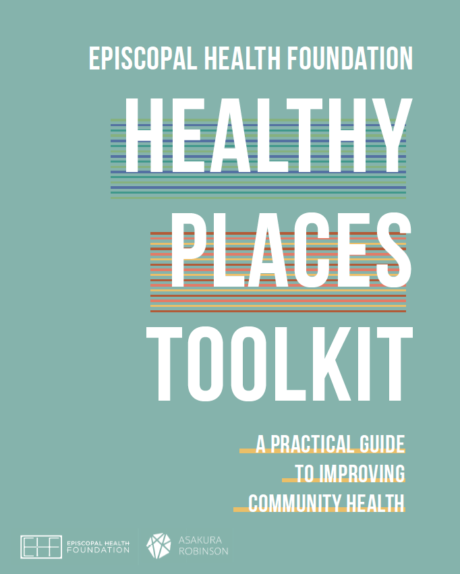 Click here or above to download the Healthy Places Toolkit
Click here or above to download the Healthy Places Toolkit
Our neighborhoods and the physical landscapes that encompass them play an important role in shaping our health and well-being. Too often, a person’s zip code can determine their lifespan and quality of life because they live in neighborhoods with unhealthy air pollution, unwalkable streets, or few grocery stores. EHF’s award-winning Healthy Places Toolkit is now available to help provide clinics and communities with ideas on how they can improve community health outcomes by addressing many of these issues that are influenced by the places we live, also known as the built environment.
“We believe that a healthy community is one in which local groups from all parts of the community work together to prevent disease and make healthy living options accessible,” said Jo Z. Carcedo, EHF’s VP for grants. “It also helps to reduce health inequities caused by differences in income, education, race and ethnicity, location, and other factors that can affect health. This guide is example of ways we can improve #HealthNotJustHealthCare in Texas and beyond.”
The toolkit is designed to help clinics and communities navigate the regulations and policies needed to improve things like clinic facilities, neighborhood walkways, open spaces, transportation options, and much more. It’s part of EHF’s ongoing effort to address the underlying, non-medical causes of poor health in Texas.
EHF’s Texas Community Centered Health Home (CCHH) Initiative invited community clinics and their neighborhood partners to work together to address community conditions that affected the health of their patients and neighbors. CCHH clinics and partners focused actions to promote change in different ways, depending on the needs of the community. Many clinics prioritized neighborhood walkability, safe recreation, community gardens, and/or other health-promoting resources like playgrounds and grocery stores.
As a result of this important work, EHF partnered with Asakura Robinson, a planning, urban design, and landscape architecture firm, to develop the Healthy Places Toolkit. Designed as a ‘know-before-you-go’ resource, the intent of the toolkit is to provide relevant information on what communities should know and consider before undertaking built environment projects like improving neighborhood safety, accessible transportation, addressing pollution, dealing with extreme heat, and more. It also offers adaptable resources for front-line staff that enable them to learn about an issue and identify approaches for addressing it.
In September, the Healthy Places Toolkit won the Central Texas Section of the American Planning Association’s 2021 Advancing Diversity and Social Change Award.
“While the ideas in the toolkit speak directly to community-based clinics, they can be undertaken by a wide variety of organizations, including school districts, city urban planning offices, public health departments, and nonprofits,” Carcedo said.